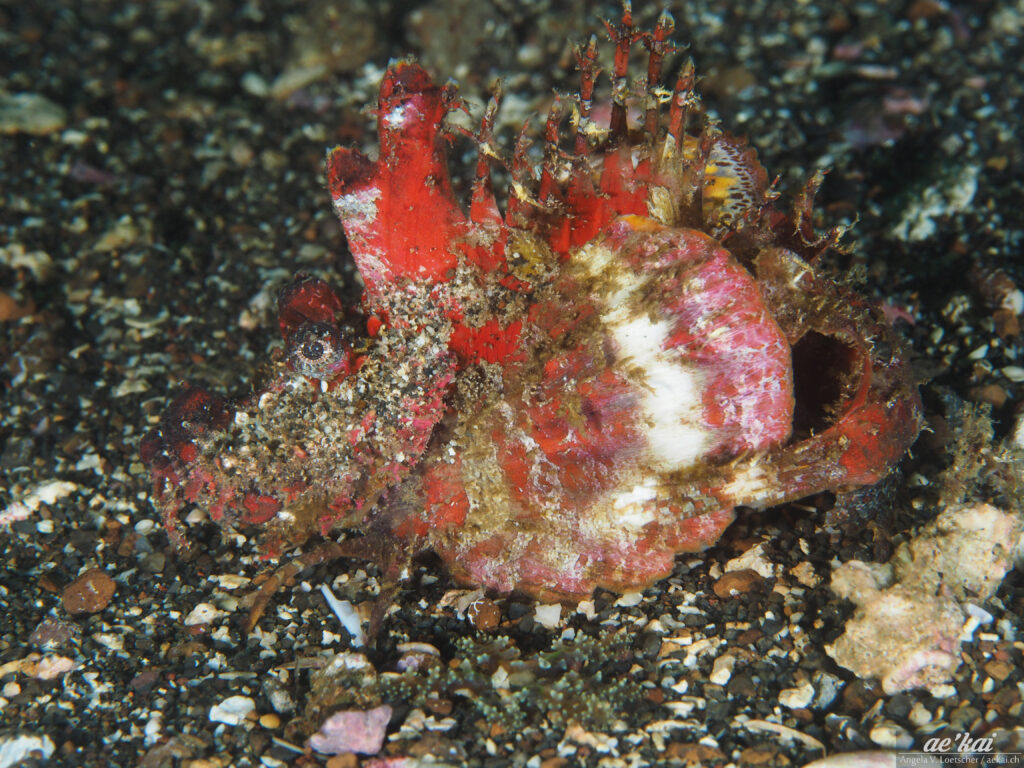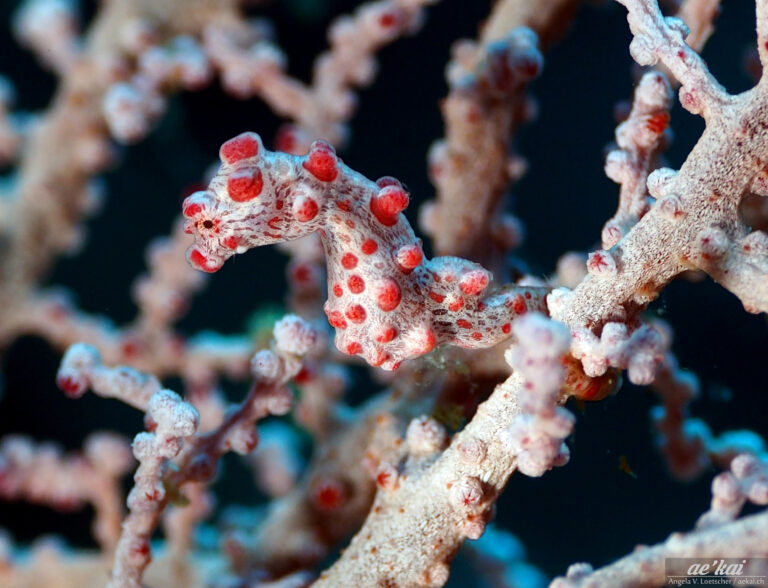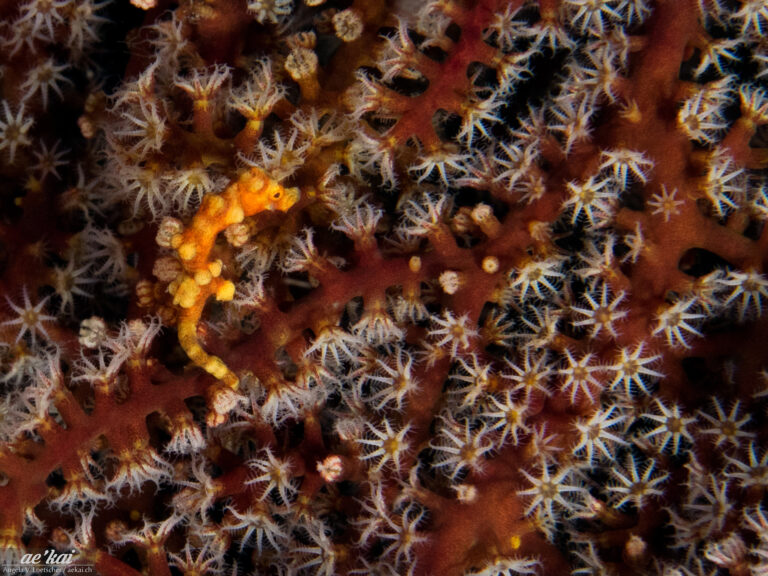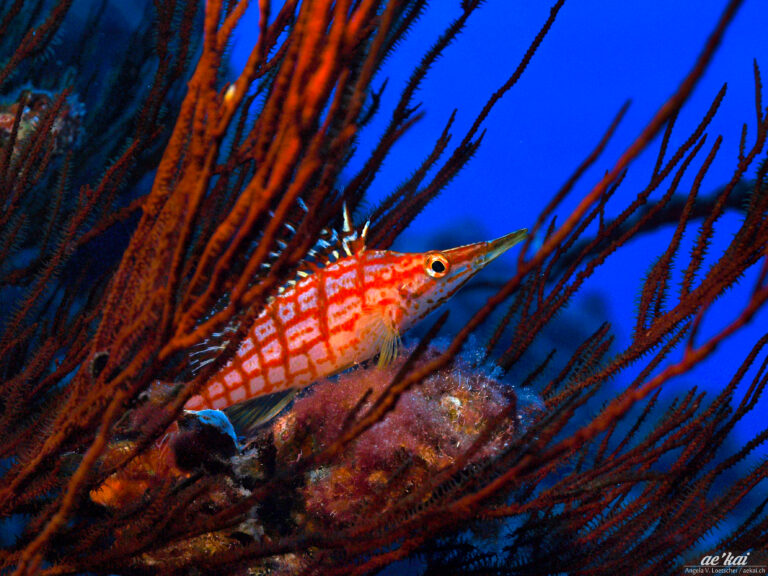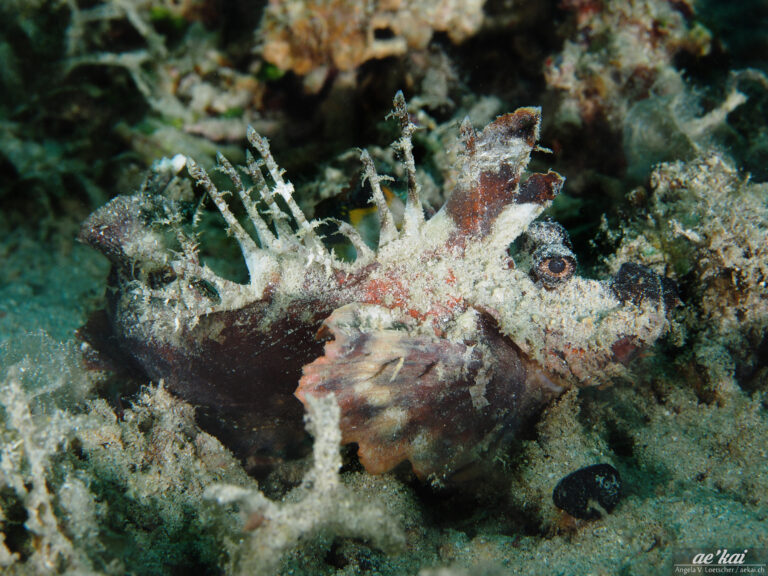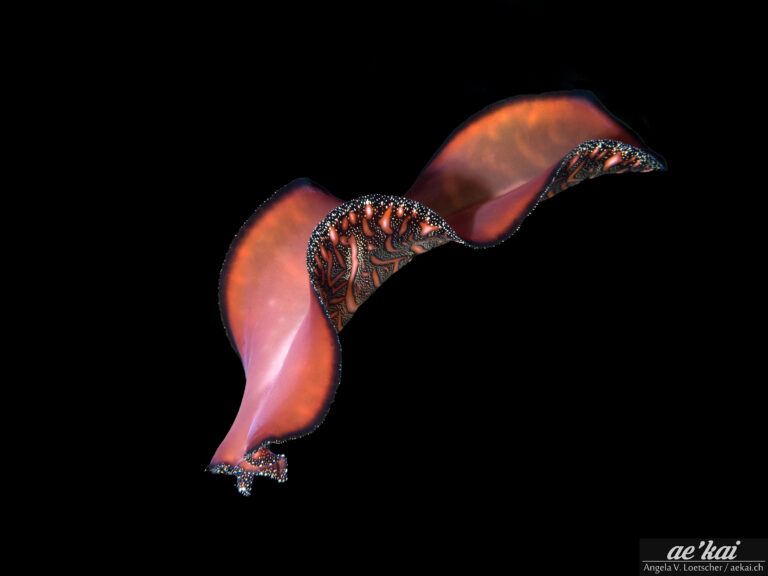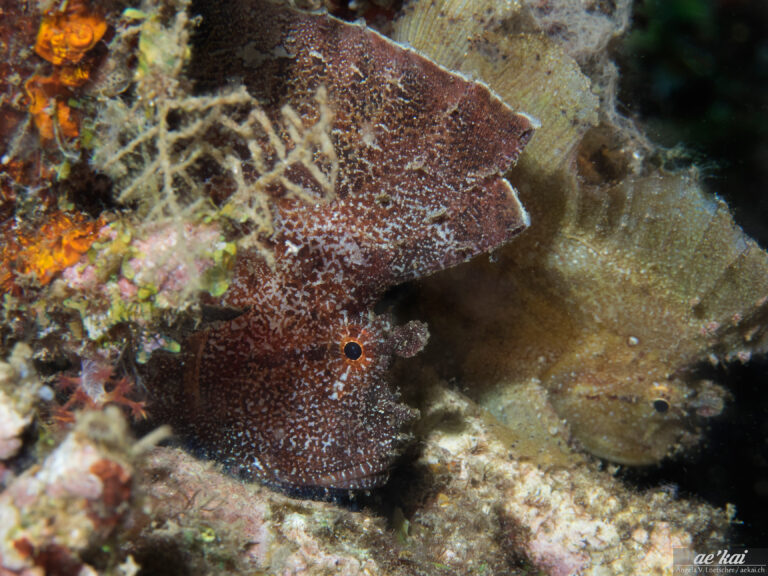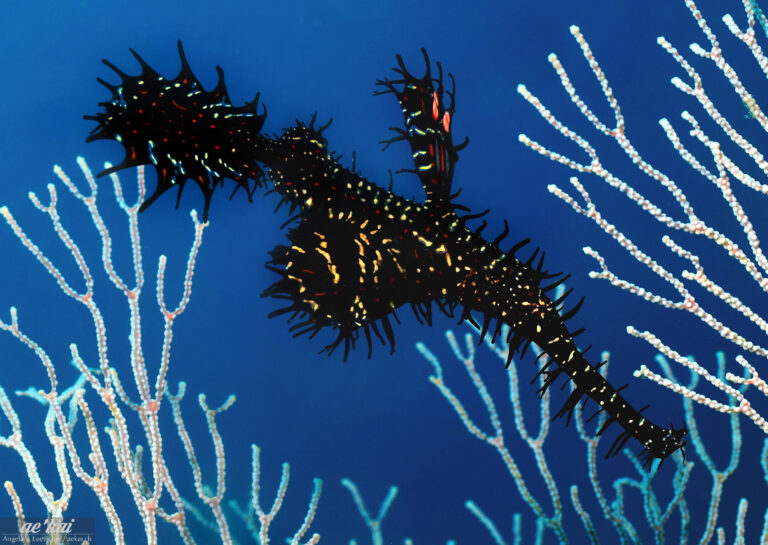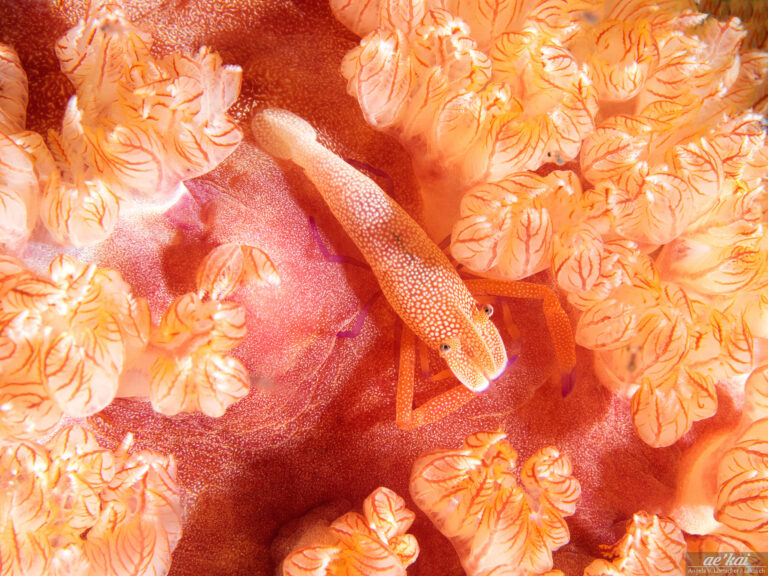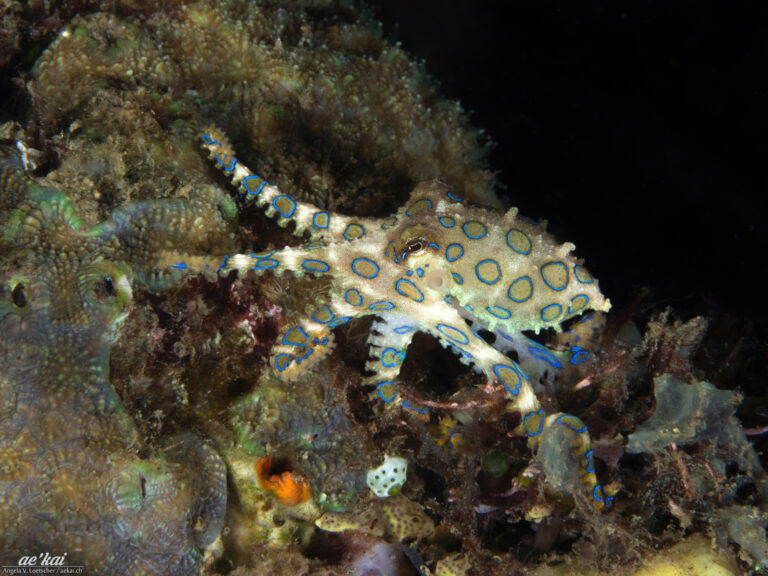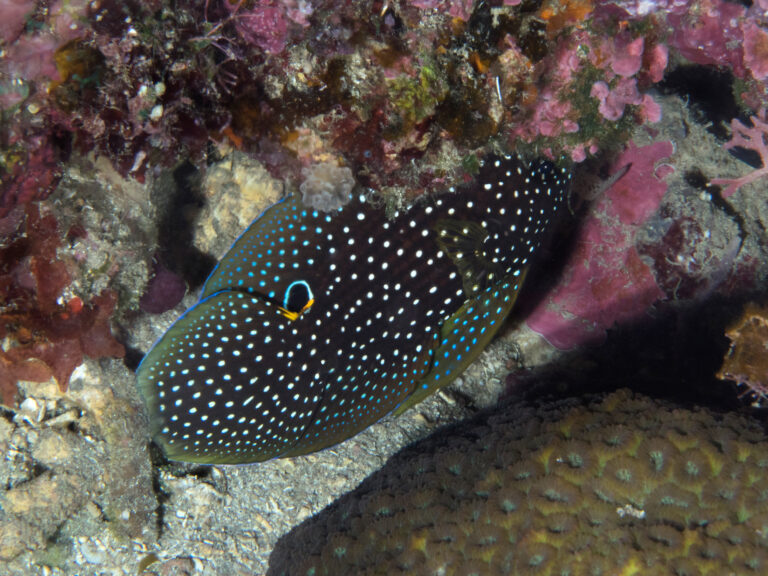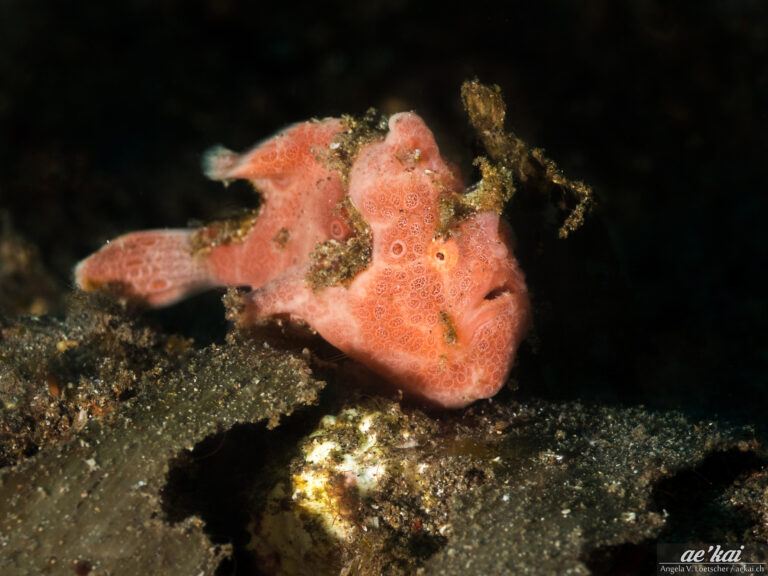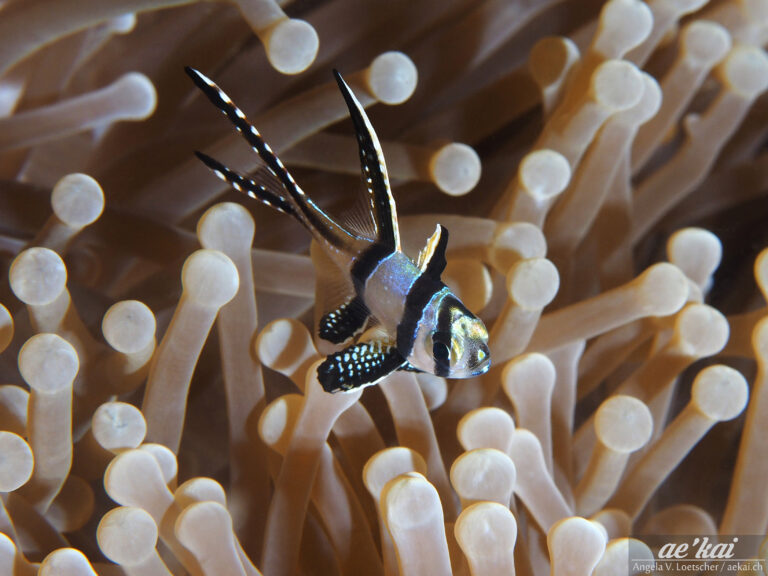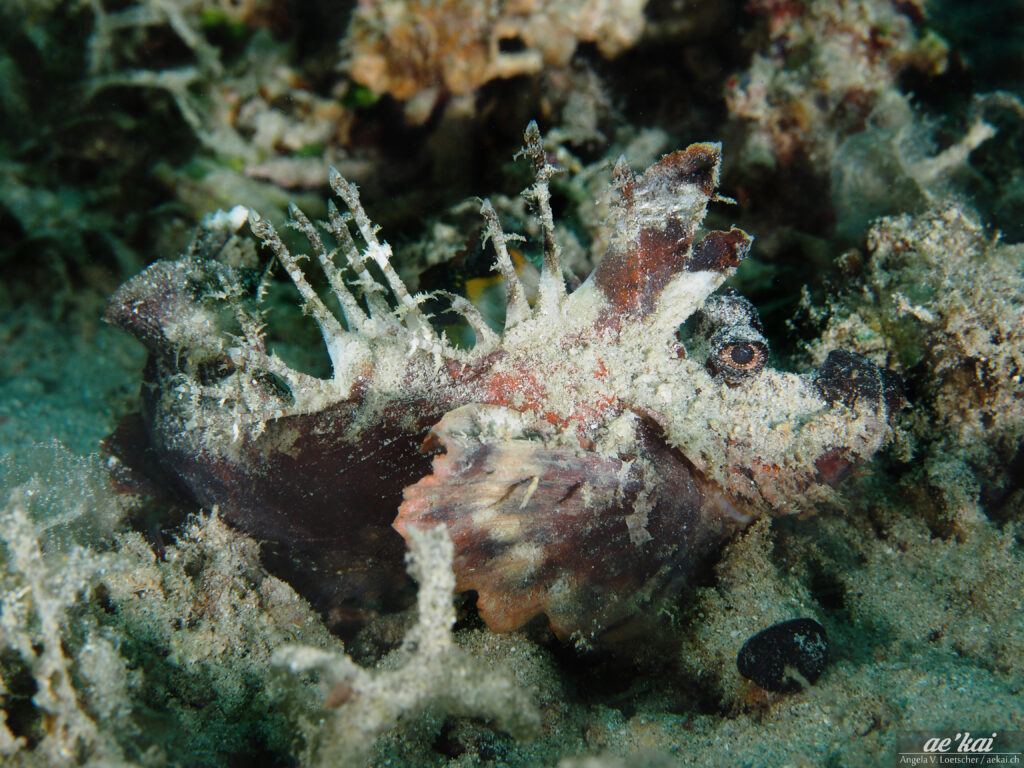
EN: Spiny Devilfish | Ocean Walkman | Demon Stinger | Devil Stinger
DE: Stachliger Teufelsfisch | Steinfisch-Teufelsfisch
Family
Stonefishes
(Synanceiidae)
Size
approx. 25 cm
Diet
Fish and
Shrimps
Distribution
Eastern Indian Ocean
to Western Pacific
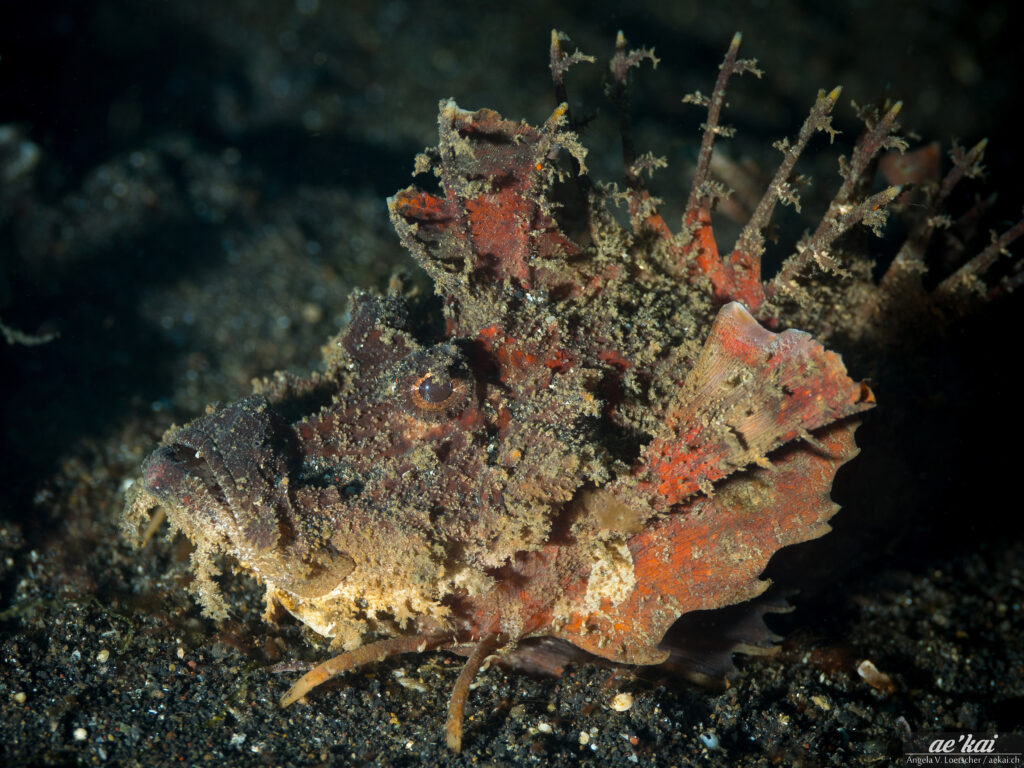
Inimicus didactylus, commonly known as the Spiny Devilfish, is a poisonous fish and closely related to the Stonefish. It can reach a length of about 25 centimeters and has an irregularly shaped skin with spines and knots. The spines protect the devil fish so well against predators that none are known. Its natural habitat extends from the Eastern Indian Ocean to the Western Pacific Ocean in depths of 5 to 450 meters.
The body is red to sandy-yellow colored and mostly exhibits lighter spotted patterns. The coloration imitates common coral or sand colors and makes the animal almost invisible on the sea floor. This way the devil fish is not only hardly visible for its predators but also for its prey. The skin is free of scales up to the area of the lateral line. The head is flattened and concave. Eyes, mouth and nostrils protrude upwards in front and seen from above rather outwards.
It can be easily distinguished from its relative, the Filamentous Devilfish/Indian Walkman (Inimicus filamentosus), with these clues: I. filamentosus has extensive ray filaments on its pectoral fins, which are clearly visible and conspicuous. Furthermore its warning coloration on the fins is rather honeycomb-like on the outer radius of the fins. Another hint can be given by the distribution, which is not really congruent. The Filamentous Devilfish is found in the Western Indian Ocean from the Red Sea to East Africa and the Maldives.
Otherwise the two are very similar, including size and weight of a maximum of 480 g.
Behavior
The Spiny Devilfish is nocturnal and buries itself partially in the sand during the day. It eats other fish or shrimps and is a so-called ambush predator. This means that it is well camouflaged and partially buried on the sea floor waiting for a suitable prey. If an unsuspecting fish appears in the right size, it is quickly snatched. Sometimes it paralyzes the fish by a rapid up-curling of the dorsal fins, so that the fish swimming past becomes an easier prey due to the sting of the poisonous spines. To perfect its camouflage, it not only gets sand on its body, but also sea debris. Once it has dug in, it leaves its hiding place only very reluctantly. This is also due to the fact that devilfish are bad swimmers (yes, there are actually fish that cannot swim very well). If it moves, it is with an unusual slithering movement of the rear two thirds of its body; if it crawls on the seabed, it uses its four lower rays of the pectoral fins like legs or fingers.
If the Devilfish is disturbed (by divers or marine animals), it fans out its brilliantly colored pectoral and caudal fins as a warning.
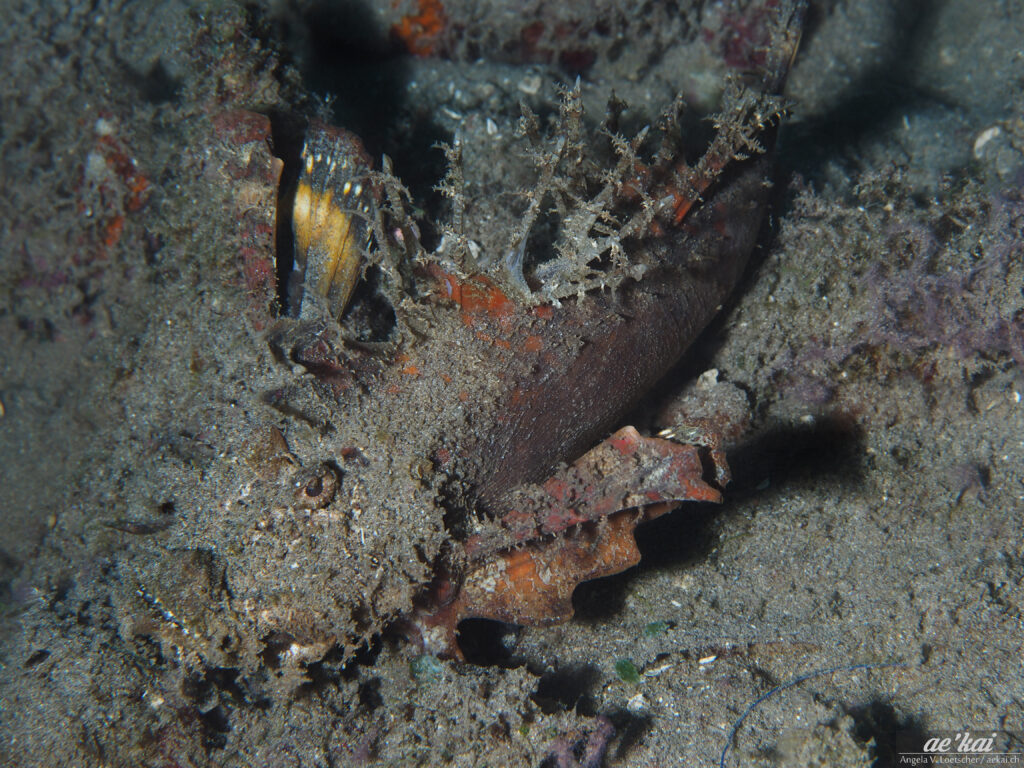
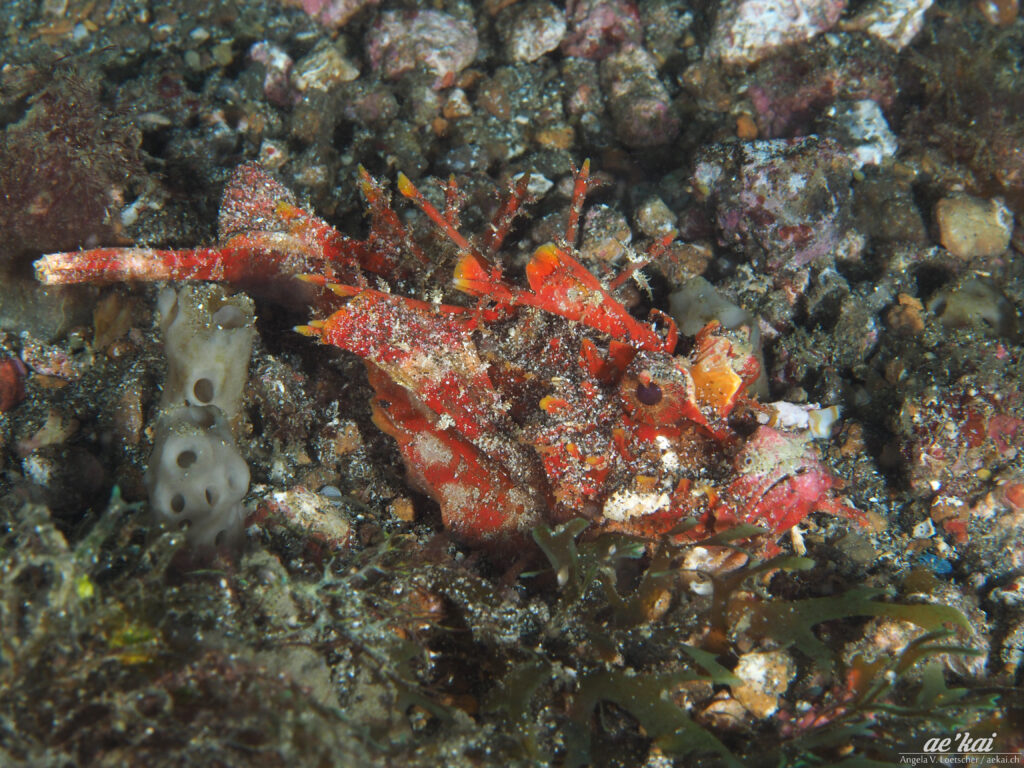
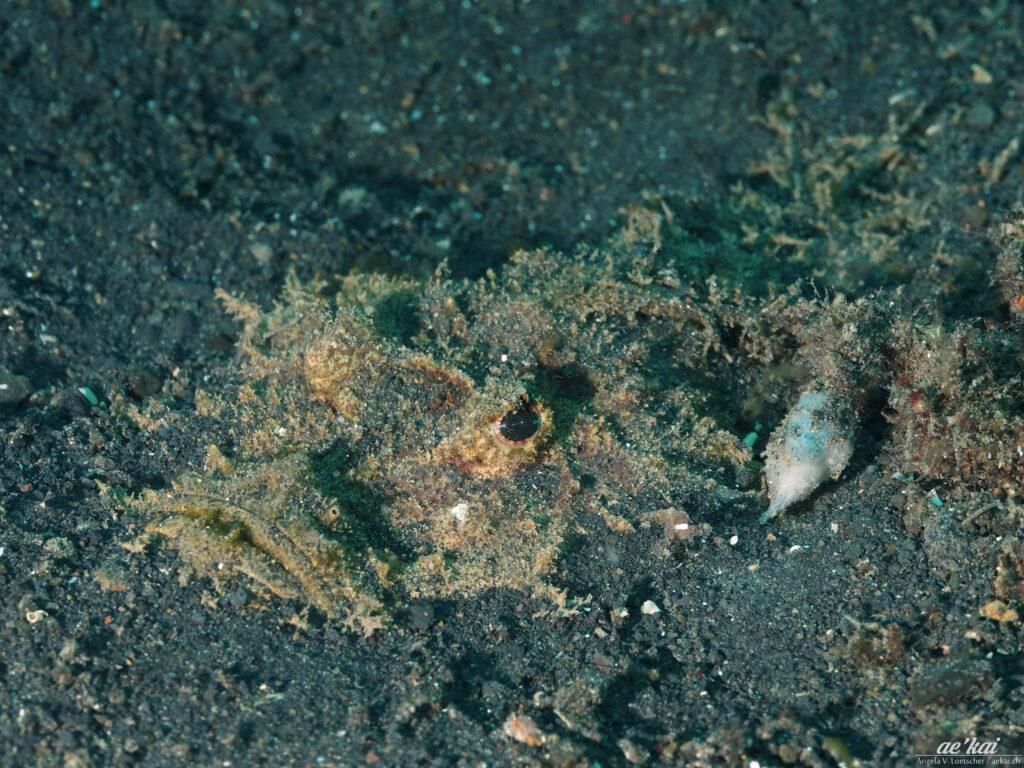
Venom
Poisoning by the Inimicus species leads to immediate and severe pain of the affected area. There is swelling at the puncture site and other symptoms such as nausea, vomiting, dizziness and shortness of breath may occur. Medical help must be sought immediately. As first aid, it is recommended, among other things, to immerse the affected area in very hot water (at least 45°C). The heat of the water can destroy the proteolytic (= protein-degrading) enzymes of the poison. By the way, this works with the toxins of most stonefish species. For pain relief a local anesthesia can also be administered at the affected area.
In extreme cases, an intramuscular injection of the stonefish antidote can be life-saving. This also seems to be effective in cases of poisoning by other members of the stonefish family. However, there is no specific antidote. Danger from the injection can actually only occur in people who have previously received the injection or who suffer from a horse serum allergy. It should also be checked when the last tetanus vaccination has been administered and this should be refreshed if necessary. Survivors usually suffer retrospectively from tissue necrosis (death of tissue) and nerve damage, which can even lead to muscle atrophy in the adjacent muscle.
